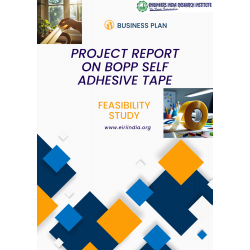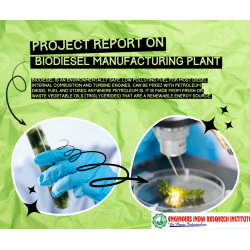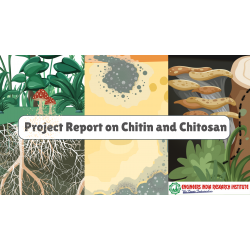Valve Manufacturing Plant
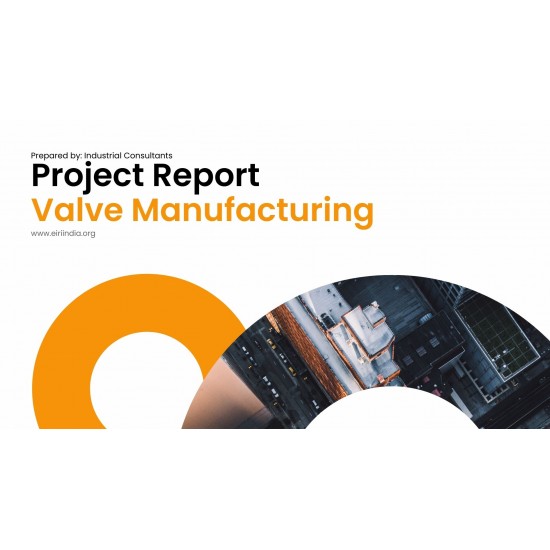
- More than 45 years of experience
- Managed by expert industrial consultants
- ISO 9001-2015 Certified
- Registered under MSME, UAM No: DL01E0012000
- 24/5 Research Support
Get your quesries resolved from an industry expert. Ask your queries before report or book purchase. - Custom Research Service
Speak to the our consultant to design an exclusive study to serve your research needs. - Quality Assurance
All reports are prepared by highly qualified consultants & verified by a panel of experts. - Information Security
Your personal & confidential information is safe & secure.
VALVE MANUFACTURING PLANT
[EIRI/EDPR/4781] J.C.: 3001XL
A valve is a device that regulates controls or directs the flow of a fluid by opening, closing, or partially obstructing fluid flow. A valve is a device that regulates, directs or controls the flow of a fluid (gases, liquids, fluidized solids or slurries) by opening, closing or partially obstructing various passageways. Valves are technically called as valves fittings, but are usually discussed as a separate category. In an open valve, fluid flows in a direction from higher to lower pressure. The word is derived from the Latin word “valva”, the moving part of a door, in turn from volvere, to turn, roll.
Valves have many uses, including controlling fluid flow for irrigation, industrial uses, controlling process and residential uses such as on/off and pressure control to dish and clothes washer and taps in the home. Even aerosols have a tiny valve built in valves are also used in the military and transport sectors.
Basically, it controls flow & pressure. Different types of valves are used to serve these functions. There are mainly about 9 Different Types of Valves used in Piping such as Gate Valve, Globe Valve, Check Valve, Plug valve, Ball Valve, Butterfly Valve, Needle Valve, Pinch Valve and Pressure Relief Valve. The item proposed is basically a casting, machined & assembled product. The castings of metals and alloys of copper, zinc, tin, aluminium, lead, alloy steel, CI etc. come under the group of non-ferrous & Ferrous castings. Some of the prominent valve castings are Brass, Bronze, Aluminium Bronze, Gun Metal, Stainless Steel; Cast Iron etc. are used to manufacture various types of valves for domestic and industrial applications.
The world is facing an economic crisis caused by the COVID-19 pandemic outbreak. The pandemic has affected the oil & gas industry badly, with oil prices slashing like never before. Major producers of oil are running out of storage space for extracted oil, and the demand is on a declining trend. This has resulted in a huge gap between supply and demand. Oil & gas is one of the key industries using valves.
COST ESTIMATION
Plant Capacity 300 Nos/Day
Land & Building (1 Acre) Rs. 1.86 Cr
Plant & Machinery Rs. 2.69 Cr
Working Capital for 2 Months Rs. 4.61 Cr
Total Capital Investment Rs. 9.68 Cr
Rate of Return 48%
Break Even Point 39%
CONTENTS
INTRODUCTION
FIG. 1: BALL VALVE IN CLOSED POSITION
HSN CODE OF THE PRODUCT:
NIC CODE OF THE PRODUCT:
GOVERNING INTERNATIONAL SPECIFICATION:
VALVES ARE CATEGORIZED AS FOLLOWS:
WAYS OF OPERATING VALVES
HAND WHEEL & LEVER OPERATED:-
ACTUATOR OPERATED VALVES:-
LIMIT SWITCH OPERATED VALVES:-
THE INDIAN STANDARDS ARE MAINLY FOLLOWED ARE AS MENTIONED BELLOW:
DIFFERENT TYPES OF VALVES
TYPES OF VALVES & SPECIFICATIONS
DETAILS OF THE PRODUCT LICENCE TO BE OBTAINED
THE TECHNOLOGY EXISTING FOR MANUFACTURING OF THE PRODUCT
INDIA INDUSTRIAL VALVES APPLICATION AREA:
SUGGESTED MODERN TECHNOLOGY FOR IMPLEMENTATION OR AVAILABLE IN THE MARKET:
RAW MATERIAL REQUIRED AND AVAILABILITY COVERING RAW MATERIAL STANDARDS INDIAN/INTERNATIONAL STANDARDS
MATERIALS USED IN VALVES
SPECIFICATIONS:
A) BRASS VALVES
B) BRONZE VALVES:
C) CAST IRON VALVES:
D) STAINLESS STEEL:
MATERIALS FOR BALL VALVES
1. PVC
2. CPVC
3. BRONZE AND BRASS
4. IRON
5. STAINLESS STEEL
CONSTRUCTION OF A BALL VALVE
FIG. 2: LUBRICANT-SEAL SYSTEM IN A BALL VALVE
TYPES OF BALL VALVES
SPLIT-BODY BALL VALVE
FIG. 3: BALL VALVES, SPLIT BODY, REGULAR PORT, FLANGED ENDS
TOP-ENTRY BALL VALVE
FIG. 4: BALL VALVES, TOP ENTRY, REGULAR PORT, SOCKET WELD ENDS
END-ENTRY BALL VALVE
THREE-PIECE — BODY BALL VALVE
DOUBLE TRUNNION BALL VALVES
LUBRICATED OR NON-LUBRICATED BALL VALVES
ADVANTAGES OF BALL VALVES
THE FOLLOWING ARE THE ADVANTAGES OF BALL VALVES:
DISADVANTAGES OF BALL VALVES
TYPICAL APPLICATIONS OF BALL VALVES
B.I.S. SPECIFICATION
PROCESS FLOW CHART
MANUFACTURING PROCESS
THE MAIN STEPS ARE GIVEN BELOW:
1. PROCUREMENT OF BRASS BILLET
2. CUTTING THE BRASS BILLET FOR REQUIRED SIZE FOR BALL AND VALE BODY
3. HEATING THE BRASS BILLET UP TO FORGING TEMP.
4. CLOSE-DIE FORGING PROCESS
ADVANTAGES OF CLOSED DIE FORGING:
HIGH STRENGTH
LEAK RESISTANCE
CLOSE TOLERANCES
LOW OVERALL COST
5. TRIMMING AND CLIPPING
6. DIP FINISHING
7. HEAT TREATMENT
ANNEALING
ANNEALING (FULL)
STRESS RELIEVING
TEMPER ANNEALING
8. MACHINING
9. QUALITY CONTROL
ACTIVITIES
INSPECTION OF PACKING AND DISPATCH
INSPECTION OF IN-COMING MATERIALS
IN-PROCESS INSPECTION
FINAL INSPECTION
CONTROL OF MEASURING, INSPECTION TOOLS AND TEST EQUIPMENTS
10. TESTING
HYDROSTATIC TESTING
LOW PRESSURE GAS SEAT TESTING
HIGH PRESSURE GAS TESTING
HIGH TEMPERATURE TESTING
FUGITIVE EMISSION TESTING
ANTISTATIC TESTING
TORQUE TESTING
CAVITY RELIEF TESTING
DOUBLE BLOCK & BLEED (DBB) TESTING
11. PACKAGING
INDIAN MANUFACTURING INDUSTRY
INTRODUCTION
MARKET SIZE
INVESTMENT
GOVERNMENT INITIATIVES
ROAD AHEAD
MARKET POSITION
MARKET SIZE ESTIMATION
TOP KEY PLAYERS IN INDIA FOR INDUSTRIAL VALVE MARKET
MARKET OVERVIEW
KEY MARKET DRIVERS
GROWING INFRASTRUCTURE DEVELOPMENT
INCREASING DEMAND IN THE OIL AND GAS INDUSTRY
EMPHASIS ON WATER AND WASTEWATER MANAGEMENT
KEY MARKET CHALLENGES
ECONOMIC VOLATILITY AND POLITICAL UNCERTAINTY
INFRASTRUCTURE GAPS AND REGIONAL DISPARITIES
INTENSE COMPETITION AND PRICE PRESSURE
KEY MARKET TRENDS
INCREASING EMBRACE OF DIGITALIZATION AND SMART VALVES
SUSTAINABILITY AND ENVIRONMENTAL COMPLIANCE
SEGMENTAL INSIGHTS
MATERIAL TYPE INSIGHTS
APPLICATION INSIGHTS
BEST BUTTERFLY VALVE MANUFACTURERS
IN INDIA
DOMBOR
L&T VALVES
KIRLOSKAR VALVES
AMCO INDUSTRIAL VALVES
AMTECH VALVES
BRAY INDIA PVT. LTD.
VIP INDUSTRIAL VALVES
HAWA VALVES
SVR VALVES
PRINCIPLES OF PLANT LAYOUT
STORAGE LAYOUT:
EQUIPMENT LAYOUT:
SAFETY:
PLANT EXPANSION:
FLOOR SPACE:
UTILITIES SERVICING:
BUILDING:
MATERIAL-HANDLING EQUIPMENT:
RAILROADS AND ROADS:
MAJOR PROVISIONS IN ROAD PLANNING FOR MULTIPURPOSE SERVICE ARE:
KEY REGULATIONS AND POLICIES
BUREAU OF INDIAN STANDARDS ACT, 2016 (“BUREAU OF INDIAN STANDARDS ACT”)
BUREAU OF INDIAN STANDARDS RULES, 2018 (“BUREAU OF INDIAN STANDARDS RULES”)
STEEL AND STEEL PRODUCTS (QUALITY CONTROL) ORDER, 2020 (“QC ORDER”)
NATIONAL STEEL POLICY, 2017 (“NSP 2017”)
INDUSTRIAL AND LABOUR LAWS
THE FACTORIES ACT, 1948 (THE “FACTORIES ACT”)
ENVIRONMENTAL LAWS
THE ENVIRONMENT PROTECTION ACT, 1986 (THE “ENVIRONMENT PROTECTION ACT”) AND THE ENVIRONMENT (PROTECTION) RULES, 1986 (THE “ENVIRONMENT PROTECTION RULES”)
AIR (PREVENTION AND CONTROL OF POLLUTION) ACT, 1981 (THE “AIR ACT”)
THE WATER (PREVENTION AND CONTROL OF POLLUTION) ACT, 1974 (THE “WATER ACT”)
NOISE POLLUTION (REGULATION AND CONTROL) RULES, 2000 (“NOISE POLLUTION RULES”)
HAZARDOUS AND OTHER WASTES (MANAGEMENT AND TRANSBOUNDARY MOVEMENT) RULES, 2016 (THE “HAZARDOUS WASTE RULES”)
PLANT LOCATION FACTORS
PRIMARY FACTORS
1. RAW-MATERIAL SUPPLY:
2. MARKETS:
3. POWER AND FUEL SUPPLY:
4. WATER SUPPLY:
5. CLIMATE:
SPECIFIC FACTORS
6. TRANSPORTATION:
A. AVAILABILITY OF VARIOUS SERVICES AND PROJECTED RATES
7. WASTE DISPOSAL:
8. LABOR:
9. REGULATORY LAWS:
10. TAXES:
11. SITE CHARACTERISTICS:
12. COMMUNITY FACTORS:
13. VULNERABILITY TO WARTIME ATTACK:
14. FLOOD AND FIRE CONTROL:
EXPLANATION OF TERMS USED IN THE PROJECT REPORT
1. DEPRECIATION:
2. FIXED ASSETS:
3. WORKING CAPITAL:
4. BREAK-EVEN POINT:
5. OTHER FIXED EXPENSES:
6. MARGIN MONEY:
7. TOTAL LOAD:
8. LAND AREA/MAN POWER RATIO:
PROJECT IMPLEMENTATION SCHEDULES
INTRODUCTION
PROJECT HANDLING
PROJECT SCHEDULING
PROJECT CONSTRUCTION SCHEDULE
TIME SCHEDULE
PLANT LAYOUT
VALVE MANUFACTURERS
DETAILS OF RAW MATERIALS SUPPLIERS
DETAILS OF MACHINERY SUPPLIERS
SUPPLIERS OF BRASS BALL VALVE
SUPPLIERS OF RAW MATERIALS
SUPPLIERS OF BRASS BILLET
SUPPLIERS OF FKM O-RING AND PTFE SEAL
SUPPLIERS OF NICKEL INGOT
SUPPLIERS OF PICKLING ACIDS
SUPPLIERS OF PACKING MATERIALS
SUPPLIERS OF PLANT AND MACHINERY
SUPPLIERS OF BILLET CUTTING MACHINE
SUPPLIERS OF ELECTROPLATING PLANT
SUPPLIERS OF ANNEALING FURNACES
SUPPLIERS OF HEAT TREATMENT FURNACE
SUPPLIERS OF HARDNESS TESTING MACHINE
SUPPLIERS OF CLOSE DIE HOT FORGING MACHINE
SUPPLIERS OF FORGING DIES
SUPPLIERS OF INDUCTION HEATING FURNACE
SUPPLIERS OF CNC LATHE MACHINE
SUPPLIERS OF CNC MACHINING CENTRE
SUPPLIERS OF METAL TESTING MACHINE
SUPPLIERS OF DG SETS
SUPPLIERS OF EOT CRANES
SUPPLIERS OF POWER TRANSFORMERS
SUPPLIERS OF ELECTRICAL PANEL
SUPPLIERS OF ELECTRIC MOTOR
SUPPLIERS OF COOLING TOWER
SUPPLIERS OF EFFULENT TREATMENT PLANT (ETP PLANT)
SUPPLIERS OF AIR POLLUTION CONTROL EQUIPMENTS
SUPPLIERS OF AIR CONDITIONING EQUIPMENTS
SUPPLIERS OF AIR COMPRESSORS
SUPPLIERS OF PLATFORM WEIGHING MACHINE
SUPPLIERS OF MATERIAL HANDLING EQUIPMENTS
SUPPLIERS OF FIRE FIGHTING EQUIPMENTS
SUPPLIERS OF SHOT BLASTING MACHINE
SUPPLIERS OF JIGS AND FIXTURE
SUPPLIERS OF SUBMERSIBLE WATER PUMP
LIST OF DOCUMENTS REQUIRED TO GET FOR LICENSES
DOCUMENTS:
OTHER LICENSES REQUIRED FOR THE SETUP:
IMPLEMENTATION SCHEDULE
ORGANIZATION CHART
STATUTORY APPROVALS FROM GOVERNMENT
SCHEMES AND CONSULTANCY SERVICES
PROPOSED SCHEMES (IF EXISTING IS NOT SUITABLE)
DETAILS OF AGENCIES WHO CAN PROVIDE GUIDANCE (CSIR, MSME, SECTOR COUNCILS ETC.)
DETAILS OF TEST FACILITIES AVAILABLE IN INDIA
SWOL ANALYSIS
STRENGTHS
OPPORTUNITIES
WEAKNESS
LIMITATIONS
STEEL PRODUCTS MANUFACTURING CONSULTANT
LIST OF MACHINES
I. LATHES
II. DRILLING MACHINES
III. MILLING MACHINE
IV. BORING MACHINE
V. VERTICAL TURRET LATHE MACHINE
VI. TAPPING MACHINE
VII. CNC MACHINE (HORIZONTAL AXIS MACHINES)
VIII. VMC MACHINE
IX. VTL CNC MACHINE
HMC - HORIZONTAL MACHINING CENTER
HORIZONTAL BORING MACHINE
X. AIR COMPRESSOR
XI. HYDRAULIC TEST RIGS
XII. GENERATOR
XII. LAPPING MACHINE
XIII. OTHER MACHINES
APPENDIX – A:
01. PLANT ECONOMICS
02. LAND & BUILDING
03. PLANT AND MACHINERY
04. OTHER FIXED ASSESTS
05. FIXED CAPITAL
06. RAW MATERIAL
07. SALARY AND WAGES
08. UTILITIES AND OVERHEADS
09. TOTAL WORKING CAPITAL
10. TOTAL CAPITAL INVESTMENT
11. COST OF PRODUCTION
12. TURN OVER/ANNUM
13. BREAK EVEN POINT
14. RESOURCES FOR FINANCE
15. INSTALMENT PAYABLE IN 5 YEARS
16. DEPRECIATION CHART FOR 5 YEARS
17. PROFIT ANALYSIS FOR 5 YEARS
18. PROJECTED BALANCE SHEET FOR (5 YEARS)
How to Make Project Report?
Detailed Project Report (DPR) includes Present Market Position and Expected Future Demand, Technology, Manufacturing Process, Investment Opportunity, Plant Economics and Project Financials. comprehensive analysis from industry covering detailed reporting and evaluates the position of the industry by providing insights to the SWOT analysis of the industry.
Each report include Plant Capacity, requirement of Land & Building, Plant & Machinery, Flow Sheet Diagram, Raw Materials detail with suppliers list, Total Capital Investment along with detailed calculation on Rate of Return, Break-Even Analysis and Profitability Analysis. The report also provides a birds eye view of the global industry with details on projected market size and then progresses to evaluate the industry in detail.
We can prepare detailed project report on any industry as per your requirement.
We can also modify the project capacity and project cost as per your requirement. If you are planning to start a business, contact us today.
Detailed Project Report (DPR) gives you access to decisive data such as:
- Market growth drivers
- Factors limiting market growth
- Current market trends
- Market structure
- Key highlights
Overview of key market forces propelling and restraining market growth:
- Up-to-date analyses of market trends and technological improvements
- Pin-point analyses of market competition dynamics to offer you a competitive edge major competitors
- An array of graphics, BEP analysis of major industry segments
- Detailed analyses of industry trends
- A well-defined technological growth with an impact-analysis
- A clear understanding of the competitive landscape and key product segments
Need Customized Project Report?
- Ask for FREE project related details with our consultant/industry expert.
- Share your specific research requirements for customized project report.
- Request for due diligence and consumer centric studies.
- Still haven't found what you're looking for? Speak to our Custom Research Team
About Engineers India Research Institute:
Note: We can also prepare project report on any subject based on your requirement and country. If you need, we can modify the project capacity and project cost based on your requirement.
Our Clients
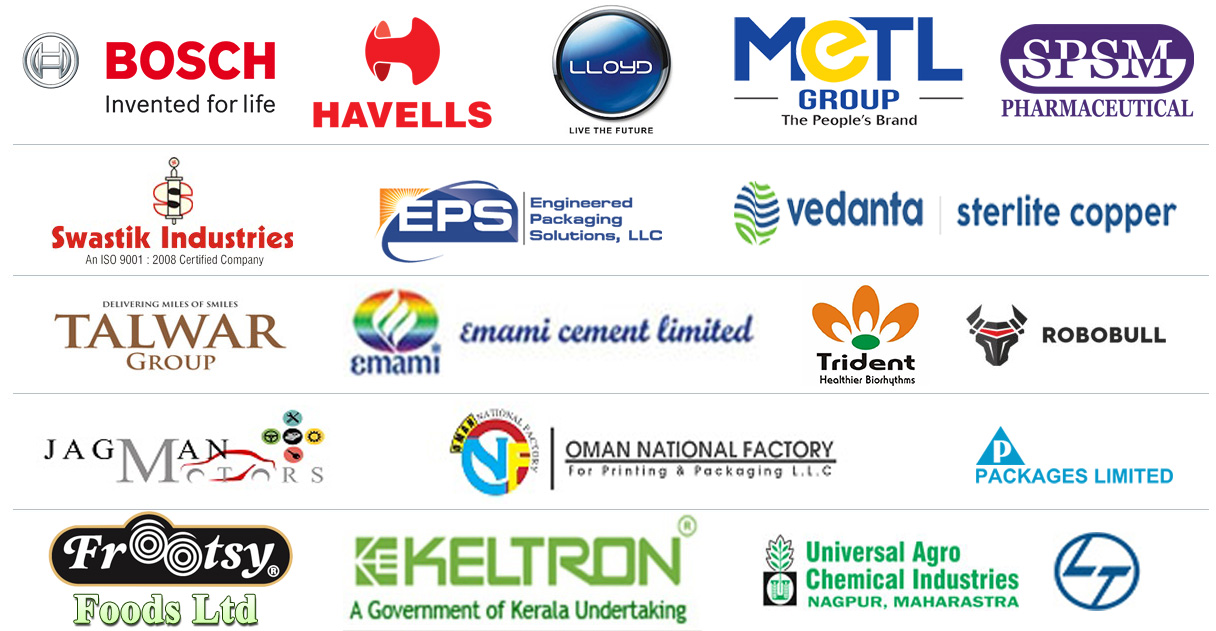
Our Approach
- Our research reports comprehensively cover Indian markets (can be modified as per your country), present investigation, standpoint and gauge for a time of five years*.
- The market conjectures are produced on the premise of optional research and are cross-accepted through associations with the business players
- We use dependable wellsprings of data and databases. What's more, data from such sources is handled by us and incorporated into the report
Why buy EIRI reports?
- Our project reports include detailed analysis that help to get industry Present Market Position and Expected Future Demand.
- Offer real analysis driving variables for the business and most recent business sector patterns in the business
- This report comprehends the present status of the business by clarifying a complete SWOT examination and investigation of the interest supply circumstance
- Report gives investigation and top to bottom money related correlation of real players/competitors
- The report gives gauges of key parameters which foresees the business execution






















